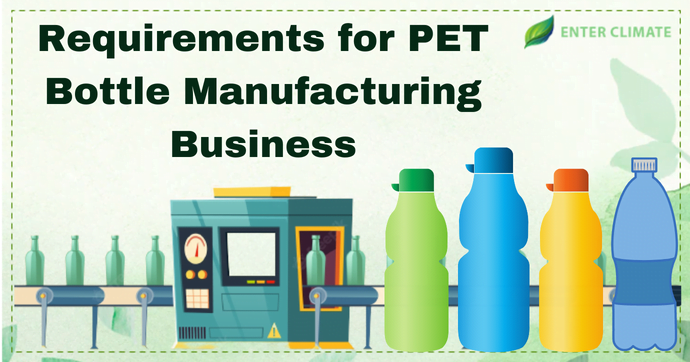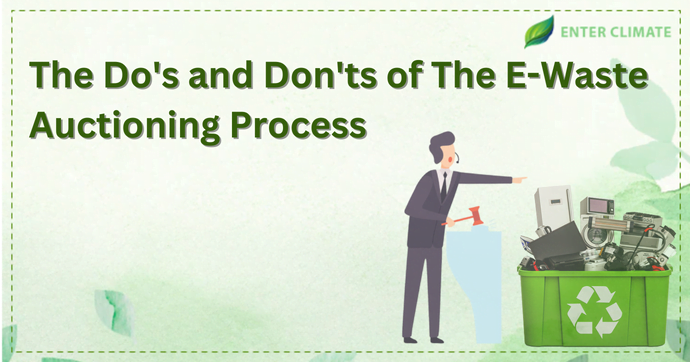What are the Licenses Needed for the dismantling of e-waste?
 23 Aug, 2022
23 Aug, 2022 
Dismantling of E-Waste is defined as the process of segregating components of E-Waste either manually or by automated machines into pieces that can be recycled, which further can be reused. The dismantling process of the appliances happens to the point where they can’t be further dismantled and are sent for processing.
Process of Dismantling E-Waste
The process of dismantling E-Waste involves: –
- De-Dusting
- Manual segregation
- Breaking of Equipment
Dismantling is one of the most crucial steps of E-Waste management. It consists of breaking end-of-use equipment into its constituents, which are then segregated so that the recycling process can be initiated in an easier way.
Market overview of dismantling e-Waste
E-Waste recycling has several advantages, which the world is now realizing, as seen by the increase in investment in and demand for e-waste recycling facilities. Dismantling is one of the steps in the e-waste recycling process. India currently has 400 registered E-Waste recyclers with a 1.07 million tonne yearly recycling capacity as of March 2021. The largest e-waste recycling facility in India, which holds five ISO certificates for recycling, has a capacity to process about 96,000 E-Waste annually.
Land requirement for dismantling E-Waste
As per the implementation guidelines published by Central Pollution Control Board, the dismantler requires sufficient space for storing Electrical and Electronic Equipment for up to 180 days for implementing the process of volume reduction, dismantling, segregating, and other utilities. According to the CPCB estimate dismantler will need a minimum of 300 square meters area for dismantling e-waste with the capacity of 1T/day.
Procedure for acquiring various licenses/Certificates needed for the dismantling of e-waste.
The process of acquiring Consent to establish
While Applying for Consent to establish, the manufacturer must apply for registration via the OCMMS (online consent management and monitoring system)[1]of the concerned State Pollution Control Boards/Pollution Control Committee. The form submitted should have all the mandatory details along with the documents authorised to be submitted along with the application. Following the submission and examination of the application, the authorised personnel inspect the premises.
After The inspection of the units along with the review by the respective committee, the committee takes the decision.
Further, In case the dismantler is unable to institute the industry within the mandatory time, then the manufacturer is obligated to apply for the postponement of the certificate one month after the expiration of the certificate. Which will be delivered after the authorised officer has finished his inspection.
Documents required for Consent to establish
The documents that are prescribed by the authorities to be submitted with the application are: –
- SSI Certificate of Partners/Directors, Industry Department Certificate
- Layout Plan, which includes Vents or Stacks or Chimney and emission sites with Nos.
- Site plan with photos depicting the distance between the proposed site and the nearest residential area and water body (applicable for Orange and Red categories).
- Collection, storage, and disposal of solid waste
- Total constructed area
- Total open land in the industrial complex for Green Belt Development, landscaping, and other purposes.
- A qualified person drew building blueprints with machinery details.
- The project report includes production process information, process flow diagram, chemical formulas, emission, effluent, and hazards/solid waste sources.
- Water usage breakdown and water balance
- Permission from the state’s groundwater authority.
- Common Biomedical Waste Treatment Facility Membership Letter (for healthcare facilities, Pharmaceutical units).
- Effluent / Sewage Treatment Plant Specifications and Flow Diagram
- Raw material list with daily MTD/monthly quantity
- Product/by-product list with daily MTD/monthly quantity
- Boiler type, fuel used, and quantity
- Specifics on air pollution controls
- DG Specifications
- In the case of chemical industries, a Material Safety Data Sheet is required.
The process of acquiring a Certificate to operate
For Consent to operate, the manufacturer must apply for registration via the online consent management and monitoring system (OCMMS) of the concerned State Pollution Control Boards/Pollution Control Committee. The form submitted should have all the mandatory details along with the documents authorised to be submitted along with the application.
After the document and fees are uploaded, the application is sent to the approved personnel for amendment, which is then monitored by personal inspection and preparation of a thorough analysis report which is submitted to the sub-regional officer. At last, the application is either permitted or rejected.
The CTO is valid for a period of 5 years in the case of the red category, ten years in the case of the orange category and 15 years in the case of the green category. For Consent to operate, renewal is to apply through OCMMS before the expiration of previous Consent to operate.
Further, the penalty is also imposed on any industry falling into green/orange or red operating without obtaining Consent. The punishment comprises imprisonment for a term which may extend to 3 months or a fine which may range to ten thousand rupees or both. The manufacturer or the industry owner is held accountable for the sentence.
Documents required for Consent to operate
The documents that are prescribed by the authorities to be submitted with the application are: –
- The Aadhar Card
- Authorisation Letter
- Pan Card
- Municipality or Industry license
- Health Trade License
- Factory/Trade License
- GST certificate
- Environmental Statement (form-V)
- CA Letter
- FSSAI Certificate (in case of a food-related business)
- Proof of Registration of unit
- Site Plan
- Water Bill
- Electricity Bill
- Proof of ownership
The procedure for obtaining an Extended Producers’ Responsibility Certificate
E-Waste (Management) Rules, 2016 regulates the procedure for obtaining E-Waste Dismantler Authorisation from State Pollution Control Board.
- Application with the SPCB – For obtaining E-Waste Dismantler, an Authorisation application is filed with the State Pollution Control Board or Pollution Control Committee as per the E-Waste Management Act, 2016.
- Submitting/Review Application- Once the application is submitted, it is reviewed by the SPCB for verification and validation. In case of any error with the application submitted, it is sent back for alteration.
- Authorisation by the SPCB- If there is no fault in the application and all the documents are reviewed, the certification is given.
Documents for the dismantling of e-waste
The documents needed by the dismantler that are to be submitted along with Form 1 to the Centre Pollution Control Board are: –
- Documents related to Extended Producers’ Responsibility action plan
- Quantity of E-Waste generated
- Scheme for collection
- Estimated budget for implementing Extended Producers’ Responsibility
- Outline the scheme of creating awareness
- Declaration on ROHS (Restriction of Hazardous Substances)compliance
- Estimated budget set aside for Extended Producers’ responsibility
- Self-declaration for compliance with ROHS (Restriction of Hazardous Substances) as per the format given by the Central Pollution Control Board
- Copies of Contract with dealers, Collection Centres, recyclers, treatment, dismantlers, disposal facilities (TSDFs), storage, etc.
- Copy of license/permissions from the relevant department/ministry for the dismantling of E-Waste:-
- TIN (Tax Information Network) Details
- PAN (Permanent Account Number) Details
- Company incorporation certificate
- Copy of IEC (in case of importers)
- The official documents (supplier declaration- description of the product, document for materials, parts, and sub-assemblies and analytical test result) as a piece of evidence that the decrease of hazardous substance (RoHS) provisions are accumulated by the product based on standard EN 50581 of EU
- Authorisation copy granted by state pollution control board/pollution control committee under E-Waste (Management and handling) Rules, 2011 in case producers’ are working outside the country before 01-10-2016
- Particulars of anticipated awareness programmes and allied ingenuities.
Obligations of dismantler while dismantling e-waste
The dismantlers under E-Waste (Management) rules must abide by the guidelines mandated by the central pollution control board regarding obtaining authorisation from the respective State Pollution Control Board pursuant to the process mandated under sub-rule (3) of Rule 13. Dismantler is also responsible for maintaining a record and filing annual returns to the respective state pollution control board/pollution control committee.
Conclusion
Dismantling of E-Waste involves manual dismantling where physical labour is required as the dismantled material is divided into two categories, one being waste which can be recycled. In contrast, the other category is reuse material. As the dismantling process is part of the recycling procedure, the dismantler needs various licenses and certificates to operate the procedure so that it can be ensured that there is little waste produced and the environment is safe.
Read our Article:How to Obtain E-Waste Business License for Refurbishing
Categories
Latest Post
Air pollution Dispersion Modeling
Natural Disaster Risk Assessment
Endangered Species Protection
Aquifer Recharge Project
Sustainable Sanitation Solutions














